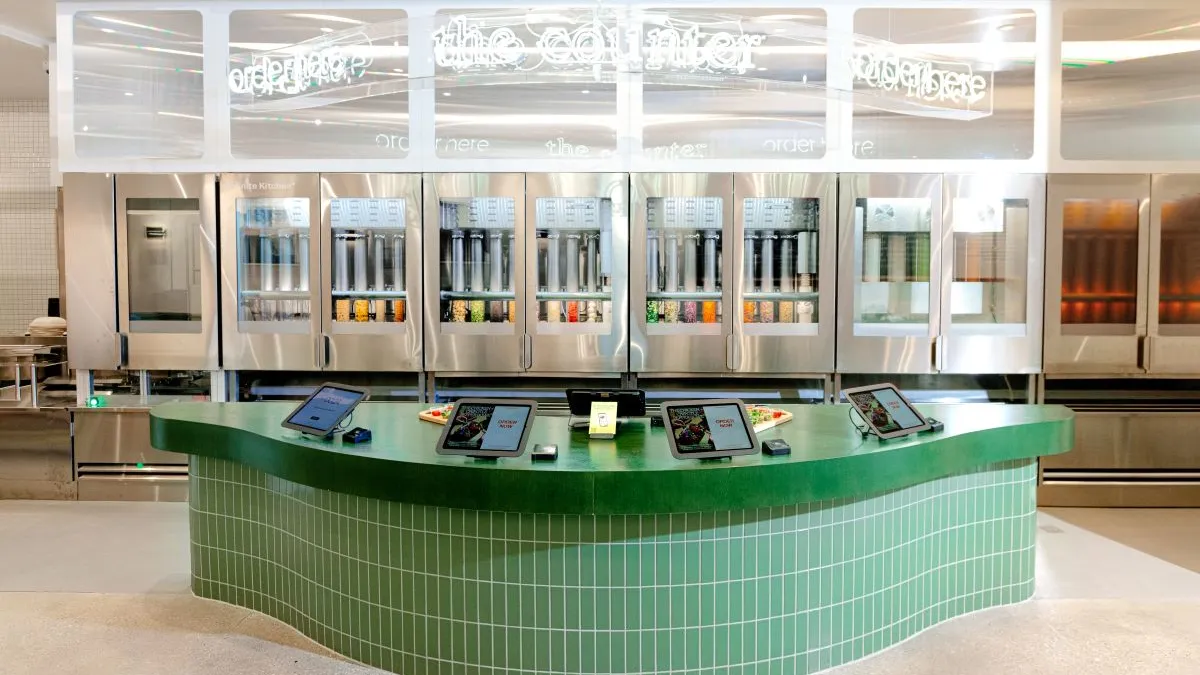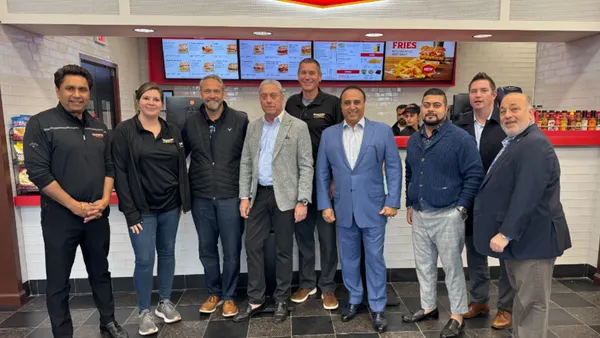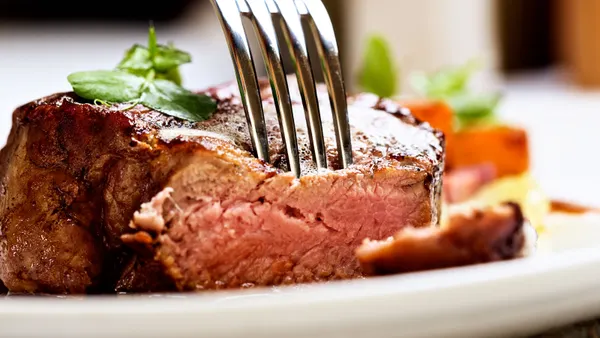Dive Brief:
- Sweetgreen plans to add its automated Infinite Kitchen in seven to nine new units and two to four retrofits next year, Sweetgreen CEO Jonathan Neman said last week during an earnings call.
- The company opened its first Infinite Kitchen in May in Naperville, Illinois, and expects to open its second in Huntington Beach, California, during Q4.
- The automated kitchen has offered several benefits to Sweetgreen’s operating model, including “increased throughput, near-perfect order accuracy, portioning consistency, a better team member experience, improved restaurant-level margins and an accretive return on capital,” Neman said.
Dive Insight:
Sweetgreen will retrofit high-volume urban stores with its Infinite Kitchen system so management can better understand the impact of the automation on revenue, flow-through and returns on capital. The chain will assess how the technology could capture more demand in these stores, while also creating a better experience.
The focus on Infinite Kitchens will slow down Sweetgreen’s development next year since it will be working on better integrating the technology into its pipeline, Neman said. The company expects to open between 23 and 28 new stores in 2024, compared to 38 new restaurants expected this year. During the third quarter, Sweetgreen opened 15 restaurants, including its first stores in Milwaukee and Orange County, California, ending the quarter with 220 total units.
“We remain focused on expanding our footprint in a capital-efficient manner, to capture the white space and expect to see our real estate pipeline resume on a higher trend line during 2025,” Neman said.
Neman previously said that Sweetgreen would add Infinite Kitchens to all of its new restaurants within the next five years. He also told investors the company’s confidence in this technology “as our assembly line engine in the future is very high.”
The technology does not do prep work or add finishing touches — employees will still be needed for those tasks. The makeline dispenses ingredients into a bowl at a rate of 500 bowls per hour.
Customers have reacted positively to the automated makeline. Neman said diners like the speed and cleanliness of the system, while team members are able to focus more on the hospitality experience. Sweetgreen’s current Infinite Kitchen locations have lower turnover rates, as well.
Neman didn’t comment on what Sweetgreen is targeting for average unit volumes at these stores, but said “the deployment of the Infinite Kitchen will be accretive to our return on capital.” For a typical Sweetgreen, the chain targets $2.8 million to $3 million in AUVs by the unit’s second year.
Much of the cost savings come from a need for less labor, which is resulting in “a lot of margin leverage in that restaurant,” he said.
“As we start to see economies of scale, we’ll continue to scale down, and we’ve already started to see that. On the flip side, as we’ve all seen, labor is inflationary,” Neman said. “So we have two cost curves going; one, significantly inflationary on the labor side, while the cost of the technology will come down. So over time, this can become … a really powerful tool for us, especially as we see significant wage increases around the country.”










